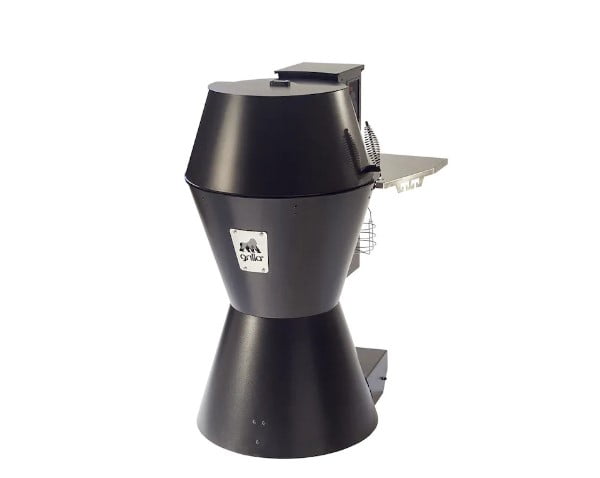Welcome to the delicious world of BBQ smoking! If you’re a newbie, using a BBQ smoker may seem challenging, but don’t worry, we’ve got you covered. This guide will demystify the art of smoking meat and break it down into simple and digestible steps.
By the end of it, you’ll be well-versed in selecting the right wood, controlling the temperature, and choosing the best cuts of meat for smoking. So, fire up your smoker, and let’s dive right in!
How to Use BBQ Smokers Quick Guide
In this section, we’ll briefly mention the main steps you’ll need to take when using a BBQ smoker. For a detailed explanation, continue below.
- Setting up the temperature probes
- Ignite the charcoal
- Open the intake and chimney baffles and add lit coals
- Temperature maintenance
- Incorporate wood chunks
- Enhancing the smoke with moisture
- Patience is key
How to Use BBQ Smokers Steps
Pay attention to the following steps and you’ll be well on your way to mastering how to use bbq smokers and becoming a BBQ smoking master.
Step 1: Setting up the temperature probes

When learning how to use bbq smokers you must know the ideal smoker temperatures typically range from 200 to 275°F, depending on the specific dish you’re preparing.
To ensure precise monitoring of temperature fluctuations as the coals burn down, the airflow is adjusted, and fuel is added, it is highly recommended to invest in a reliable digital thermometer. This will enable you to maintain optimal cooking conditions and achieve the desired results.
Step2: Ignite the charcoal
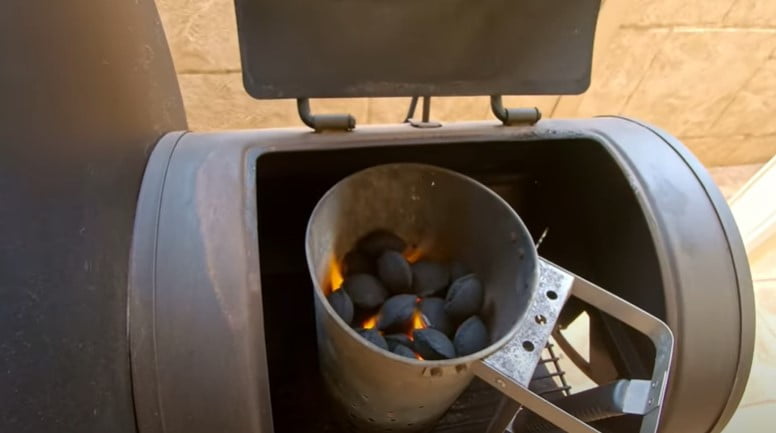
Once your meat is prepared for cooking, ignite your smoker grill by lighting a full load of charcoal in a chimney starter until it begins to develop a light layer of ash. This process typically takes around 15 minutes.
Step 3: Open the intake and chimney baffles and add lit coals
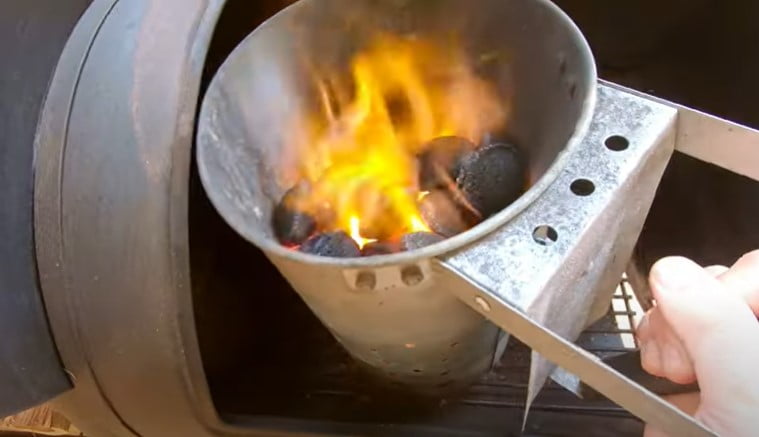
Begin by opening the intake and chimney baffles, allowing for proper airflow. Add lit coals to the firebox and patiently wait until the smoker grill reaches your desired temperature.
Once the temperature probes indicate that the smoker has reached the desired temperature, it’s time to add the meat. Gently place the meat into the smoker and carefully close the door.
Step4: Temperature maintenance
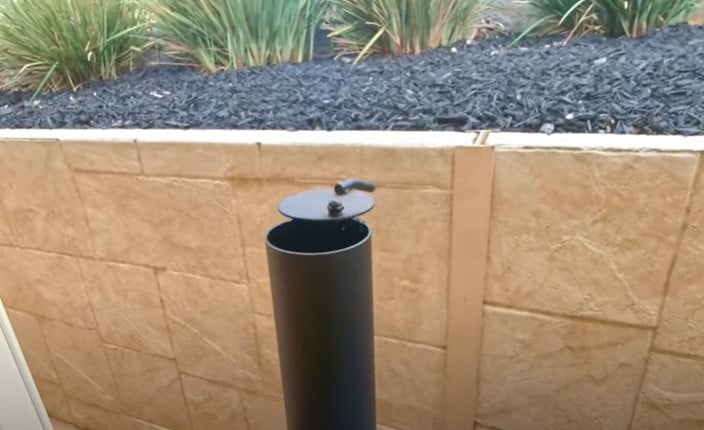
Begin by adjusting the intake baffle to regulate the heat. Gradually close it halfway or more until the temperature stabilizes between 225-250°F on the hotter side of the smoker. Keep the chimney baffle fully open. When the coals fade out, replenish as needed with fully lit coals from the chimney starter.
Step 5: Incorporate wood chunks
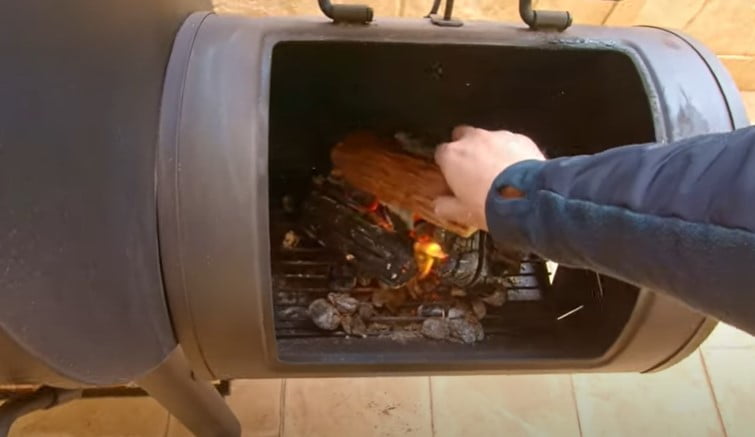
Wood chips, available in various types such as hardwoods and nut woods, are the key to infusing that delightful smoky flavor. It is generally recommended to use large wood chunks instead of chips, as they burn slower and more consistently, enhancing the overall smoking experience.
Step 6: Enhancing the smoke with moisture

To infuse your barbecue with a delectable smoky flavor, it is crucial to introduce moisture to both the smoke and meat. This can be achieved by placing a metal rack over the coals in the firebox and incorporating a water pan on the grate.
Alternatively, you can spritz your meat with a fine mist of water or apple juice. These methods will elevate the taste and ensure a mouthwatering experience.
Step 7: Patience is Key
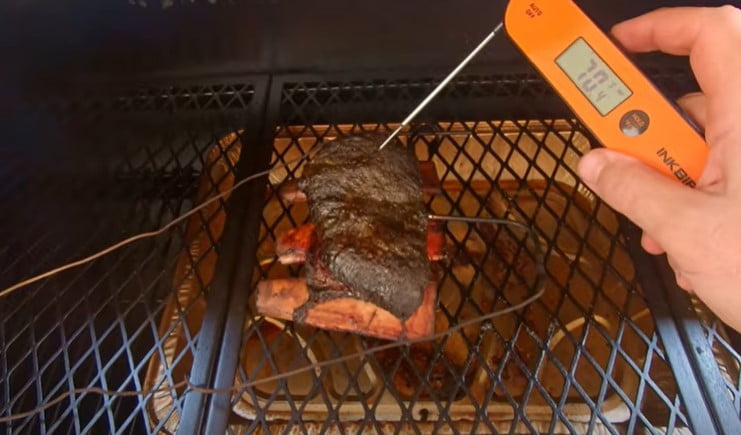
Cooking times can differ depending on factors such as temperature, meat type, and smoker variety. A general guideline is to allocate one to one and a half hours per pound for larger meat chunks.
And there you have it! You’re now ready to embark on your BBQ smoking adventure.
Recommended BBQ Smokers That Get the Job Done
If you’re in the market for a smoker, here are some of the best grills on the market.
Grilla Pro Wood Pellet Smoker Grill
The Grilla Pro wood pellet smoker grill offers convection grilling airflow, creating that Pro-Smoke barbecue flavor.
With Grilla’s EvenTemp Chamber, Keep Heat Swing Lid, and Never Flare Flavor Disk, you can achieve consistent heat and smoke levels in the cooking chamber.
The Grilla Pro wood pellet grills also feature a convertible, two-tiered stainless steel cooking surface and Set ‘n Forget digital controls.
Plus, there’s no need for matches, lighter fluid, or gas with Autostart. Convenience is enhanced with EZ glide wheels, a flame-viewing window, a powder-coat finish, and a stainless-steel work surface.
Common Questions About How to Use BBQ Smokers
Before you start smoking, here are some answers to common questions about how to use bbq smokers.
How Much Wood Should You Use in a Smoker?
The amount of wood you should use depends on the type and size of your smoker. Generally speaking, 40 to 50 pieces of charcoal is enough for a small smoker; use 60-80 pieces for larger smokers.
How Long Does It Take to Smoke Meat?
It depends on the type of meat and the size of your smoker. Generally speaking, small cuts like burgers or pork chops take 30 minutes to an hour, while larger cuts such as brisket can take up to 8 hours.
The ideal temperature for smoking meat is between 225 and 250 degrees Fahrenheit. This will ensure even cooking and prevent your meat from drying out.
How to use a smoker with wood chips?
To enhance the flavor of your food when using a smoker, consider learning how to use bbq smokers by incorporating wood chips. There are a few simple steps to follow for optimal results.
- Begin by soaking the chips in water for approximately 30 minutes, then strain them before adding them to the preheated coals.
- As the food cooks, the wood chips will impart a delightful smoky taste, while the water in the pan will help prevent the food from drying out.
- Remember to replenish the water pan as needed when turning the food during the cooking process. By following these steps, you’ll achieve a delectable and moist outcome for your smoked dishes.
What are some of the best cuts for a smoker grill?
The key to achieving perfectly smoked meat lies in selecting a protein with adequate fat content. As the cooking process extends over a longer duration, the fat plays a crucial role in sealing in moisture and preventing the meat from drying out.
For beginners, it is advisable to start with forgiving cuts such as pork butt or pork shoulder. These cuts allow you to become acquainted with temperature control and smoke levels, and they are difficult to overcook, ensuring a delectable end result.
In due course, you can explore more challenging cuts like brisket, spare ribs, whole turkeys, salmon, lamb, and tri-tip steak. These cuts are among the finest choices for smoking, delivering exceptional flavors and textures.
Video OFFSET SMOKER FIRE MANAGEMENT FOR BEGINNERS | How To Burn A Clean Fire | Fatty’s Feasts
Watch the video below for a comprehensive guide on how to use an offset smoker, including fire management techniques and maintenance tips.
Final Thoughts
Smoking can be a daunting task, especially if you’re just starting out. But with the right steps, tools, and knowledge, anyone can learn how to use bbq smokers and become a master of BBQ smokers! We hope this guide helps you on your journey.
Cooking with fire is an art form, and like any art, it takes practice to perfect it. So don’t be afraid to experiment until you find out what works best for you. Enjoy the process and have fun!
